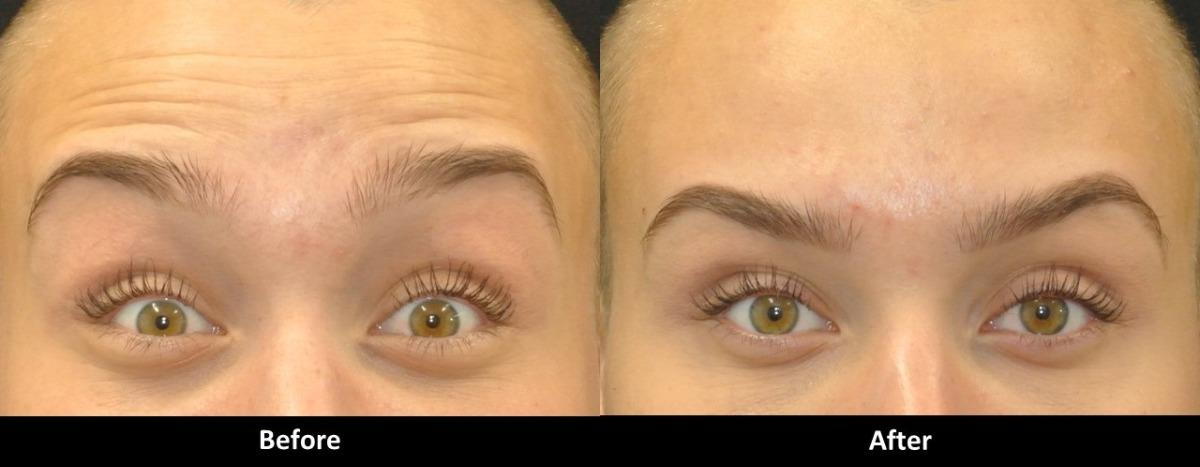
Do you want to know how much Botox you need? Then read below.
What is Botox?
Botox is a purified protein used to treat wrinkles caused by facial expression. These include the horizontal forehead wrinkles on your upper forehead you see when raising your eyebrows, the frown lines between your eyebrows you see when you frown, and the crow’s feet around your eyes you seen when you smile or squint.
Clinical Trials for Botox
Before a treatment such as Botox is approved, it goes through rigorous clinical trials to make sure it’s safe and effective. During these trials, people receive Botox and their results are monitored. Trials have to be standardized. This means everyone has to get the same dose. For example, when they did the trials for Botox to treat the frown lines they used a dose of 20 units. If the Botox dose that was used is safe and achieves the results (such as smoothing out the frown lines), then Botox is approved for the dose used in the trial. This is why the approved (or on-label) dose for Botox to treat frown lines is 20 units.
Although the approved dose for Botox may be a certain value, it may not be the amount that’s used for you. There are multiple reasons for this. First, when they do clinical trials, they’re trying to achieve a goal. For example, in the case of horizontal frown lines the goal was to improve the appearance of the lines. To do this, in the trials they used 20 units of Botox and they saw that it achieved the goal. However, in some people, this dose of Botox in the area makes the eyebrow heavy and lowers it. This can lead to heavy eyelids as a result. Therefore, a lower Botox dose is usually used in this area.
Individual Differences that Affect Botox Dose
In addition, everyone is different and each person’s anatomy is unique. For example, some people are more expressive than others. This causes their muscles to get stronger and larger. In these cases, a higher Botox dose is recommended. This is assessed during a consultation where Dr. Alex looks at your skin when you’re making facial expressions. Also, in general, men have stronger muscles than women, both on their bodies and on their faces. This means that their facial muscles can be stronger and larger, and therefore they require a higher Botox dose.
Anatomic Differences that Affect Botox Dose
Other aspects of anatomy are also important when determining the right Botox dose for you. For example, some people have a broad forehead, while others have a narrow forehead. When treating horizontal forehead wrinkles it’s important to keep this in mind. If you have a broad forehead and use don’t get a high enough dose of Botox, you may still see wrinkles. Therefore, people with broad foreheads generally need a higher dose of Botox in this area. On the other hand, if you have a narrow forehead and you get too high a dose of Botox, your eyebrows may feel heavy. Therefore, people with narrow foreheads generally need a lower dose of Botox in this area.
In summary, there are many factors that affect the right dose of Botox for you. The right Botox dose is different for each person. For the best answer to the question of how much Botox you need, you want to start with a consultation so Dr. Alex can look at your skin and give you specific recommendations.
Dr. Alex has performed over 10,000 cosmetic treatments with many satisfied patients. Contact us to schedule an appointment for a free consultation with Dr. Alex in our Encino, CA office.

